Related Research Articles

Entomology is the scientific study of insects, a branch of zoology. In the past the term "insect" was less specific, and historically the definition of entomology would also include the study of animals in other arthropod groups, such as arachnids, myriapods, and crustaceans. This wider meaning may still be encountered in informal use.
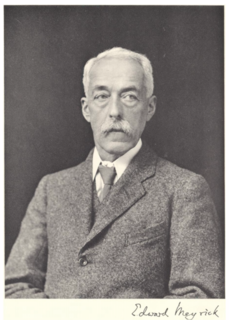
Edward Meyrick was an English schoolmaster and amateur entomologist. He was an expert on microlepidoptera and some consider him one of the founders of modern microlepidoptera systematics.

Augustus Radcliffe Grote was a British entomologist who described over 1,000 species of butterflies and moths. He is best known for his work on North American Noctuidae. A number of species were named after him, including the moth Horama grotei.
Charles Lionel Augustus de Nicéville was a curator at the Indian Museum in Calcutta. He studied the butterflies of the Indian Subcontinent and wrote a three volume monograph on the butterflies of India, Bangladesh, Nepal, Burma and Sri Lanka. He also studied the mantids of the Oriental region.

William Henry Edwards was an American businessman and entomologist. He was an industrial pioneer in the coalfields of West Virginia, opening some of the earliest mines in the southern part of the state. He was also a prominent naturalist specializing in the study of butterflies. He wrote The Butterflies of North America, a three-volume treatise that is highly regarded for its scholarship and the quality of its illustrations.
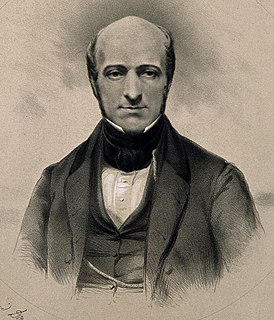
Edward Doubleday was an English entomologist primarily interested in Lepidoptera. He is best known for The Genera of Diurnal Lepidoptera: Comprising Their Generic Characters, a Notice of Their Habits and Transformations, and a Catalogue of the Species of Each Genus, co-written with John O. Westwood, and illustrated by William Chapman Hewitson; and List of the Specimens of Lepidopterous Insects in the Collection of the British Museum.

James John Joicey FES was an English amateur entomologist, who assembled an extensive collection of Lepidoptera in his private research museum, called the Hill Museum, in Witley, Surrey. His collection, 40 years in the making, was considered to have been the second largest in the world held privately and to have numbered over 1.5 million specimens. Joicey was a fellow of the Zoological Society of London, the Royal Geographical Society, the Royal Entomological Society, the Royal Horticultural Society, and the Linnean Society of London.
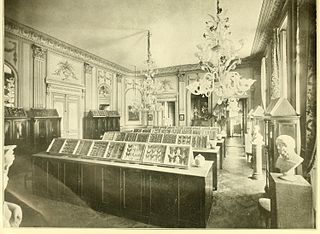
Hans Fruhstorfer was a German explorer, insect trader and entomologist who specialised in Lepidoptera. He collected and described new species of exotic butterflies, especially in Adalbert Seitz's Macrolepidoptera of the World. He is best known for his work on the butterflies of Java.
Herbert Druce, FLS was an English entomologist. His collections were acquired by Frederick DuCane Godman (1834–1919), Osbert Salvin (1835–1898), and James John Joicey (1870–1932) before being bequeathed to the Natural History Museum, London. He is not to be confused with his son, the English entomologist Hamilton Herbert Druce, who also worked on Lepidoptera.
Sir George Hamilton Kenrick FRES was an English entomologist who specialised in Lepidoptera especially those of New Guinea. He was a prominent liberal educationist and was a councillor in Birmingham.
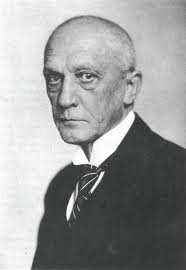
Hans Rebel was an Austrian entomologist who specialised in Lepidoptera.

Max Wilhelm Karl Draudt was a German entomologist, who specialised in Lepidoptera.

George Talbot FES was an English entomologist who specialised in butterflies. He wrote about 150 scientific papers, the majority being primarily systematic, consisting of the description of new species or the revision of various genera. He was also responsible for the curation and preservation of the Joicey collection of Lepidoptera prior to its accession by the Natural History Museum.

Harrison Gray Dyar Jr. was an American entomologist after whom a pattern of geometric progression in the growth of insect parts is named - Dyar's Law. He was also noted for eccentric pursuits which included digging tunnels under his home. He had a complicated personal life and along with his second wife he adopted the Baháʼi faith.

William Schaus was an American entomologist who became known for his major contribution to the knowledge and description of new species of the Neotropical Lepidoptera.
Louis Beethoven Prout (1864–1943) was an English entomologist and musicologist.
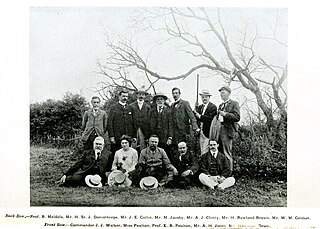
Hamilton Herbert Charles James Druce was an English entomologist who specialised in Lycaenidae and to a lesser extent Hesperiidae. He is not to be confused with his father, the English entomologist Herbert Druce (1846–1913) who also worked on Lepidoptera.

Chlosyne californica, the California patch, is a butterfly of the family Nymphalidae found in the Southwestern United States and Mexico. It lives in desert washes and canyons in regions between southern Nevada south to southwestern Arizona, southeastern California, Baja California and Sonora.
The Lorquin Entomological Society is a century-old association of professional and amateur entomologists, biologists and naturalists that meet regularly to study and promote entomology and natural history, especially about wildlife in and near Southern California.
Robert F. Sternitzky was a United States lepidopterist and illustrator. Butterfly and moth specimens he collected are in a number of collections, including those of the Harvard Museum of Natural History, the Essig Museum of Entomology, Manitoba Museum, and the Smithsonian National Museum of Natural History. He collected primarily in California and Arizona.
References
Dos Passos,C. 1938 The types of Lepidoptera described by J.D. Gunder. American Museum Novitates, no. 999 New York City : The American Museum of Natural History.Includes bibliography.